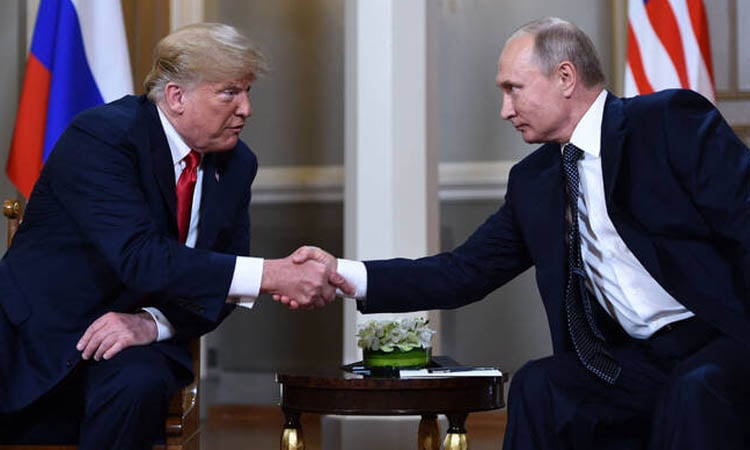News Flash
News Flash

WASHINGTON, Aug 11, 2025 (BSS/AFP) - Presidents Donald Trump and Vladimir Putin will hold a high-stakes meeting about the Ukraine war on Friday in Alaska, which the United States bought from Russia more than 150 years ago.
Russian influence still endures in parts of the remote state on the northwest edge of the North American continent, which extends just a few miles from Russia.
- Former Russian colony -
When Danish explorer Vitus Bering first sailed through the narrow strait that separates Asia and the Americas in 1728, it was on an expedition for Tsarist Russia.
The discovery of what is now known as the Bering Strait revealed the existence of Alaska to the West -- however Indigenous people had been living there for thousands of years.
Bering's expedition kicked off a century of Russian seal hunting, with the first colony set up on the southern Kodiak island.
In 1799, Tsar Paul I established the Russian-American Company to take advantage of the lucrative fur trade, which often involved clashes with the Indigenous inhabitants.
However the hunters overexploited the seals and sea otters, whose populations collapsed, taking with them the settlers' economy.
The Russian empire sold the territory to Washington for $7.2 million in 1867.
The purchase of an area more than twice the size of Texas was widely criticized in the US at the time, even dubbed "Seward's folly" after the deal's mastermind, secretary of state William Seward.
- Languages and churches -
The Russian Orthodox Church established itself in Alaska after the creation of the Russian-American Company, and remains one of the most significant remaining Russian influences in the state.
More than 35 churches, some with distinctive onion-shaped domes, dot the Alaskan coast, according to an organization dedicated to preserving the buildings.
Alaska's Orthodox diocese says it is the oldest in North America, and even maintains a seminary on Kodiak island.
A local dialect derived from Russian mixed with Indigenous languages survived for decades in various communities -- particularly near the state's largest city Anchorage -- though it has now essentially vanished.
However near the massive glaciers on the southern Kenai peninsula, the Russian language is still being taught.
A small rural school of an Orthodox community known as the "Old Believers" set up in the 1960s teaches Russian to around a hundred students.
- Neighbors -
One of the most famous statements about the proximity of Alaska and Russia was made in 2008 by Sarah Palin, the state's then-governor -- and the vice-presidential pick of Republican candidate John McCain.
"They're our next-door neighbors, and you can actually see Russia from land here in Alaska, from an island in Alaska," Palin said.
While it is not possible to see Russia from the Alaskan mainland, two islands facing each other in the Bering Strait are separated by just 2.5 miles (four kilometers).
Russia's Big Diomede island is just west of the American Little Diomede island, where a few dozen people live.
Further south, two Russians landed on the remote St. Lawrence island -- which is a few dozen miles from the Russian coast -- in October, 2022 to seek asylum.
They fled just weeks after Putin ordered an unpopular mobilization of citizens to boost his invasion of Ukraine.
For years, the US military has said it regularly intercepts Russian aircraft that venture too close to American airspace in the region.
However Russia is ostensibly not interested in reclaiming the territory it once held, with Putin saying in 2014 that Alaska is "too cold".